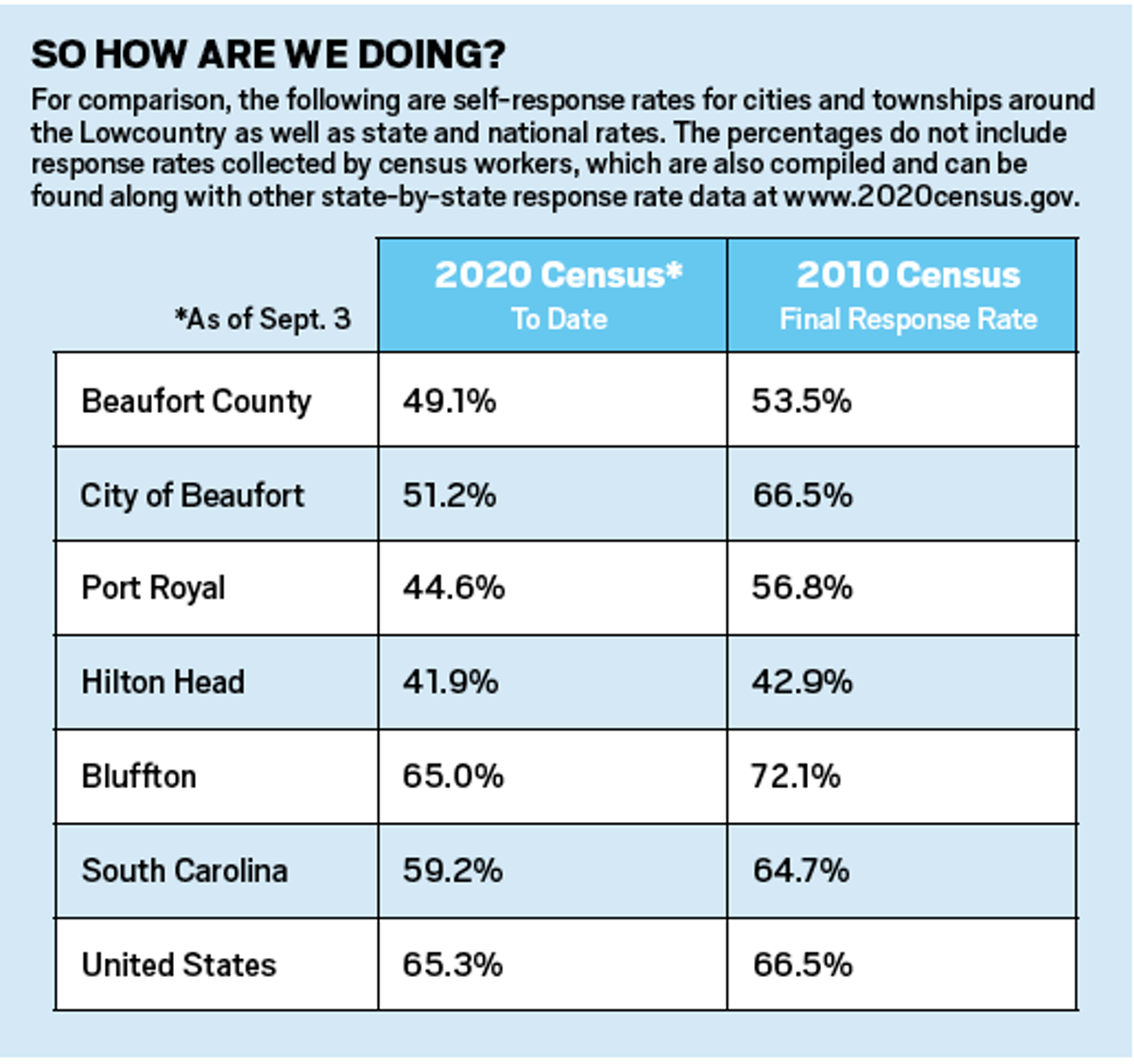Lowcountry response lagging behind last tally
By Mindy Lucas
When it comes to counting its citizens, South Carolina and the Lowcountry are falling behind – not just compared to where other states and regions are now, but compared to the area’s own final response rates from ten years ago.
Delays due to Covid-19 and an earlier than usual deadline have complicated matters, City of Beaufort’s communications and marketing manager Kathleen Williams said.
So much so that city and county officials across the region got together recently to launch an area-wide Census Day, she said.
Held Wednesday, Sept. 9, the day served as a reminder of the importance of answering the questionnaire and what having an accurate count can mean to communities across the Lowcountry.
Beaufort County, for example, is down three-and-a-half percentage points from where it finished in 2010 in terms of its self-response rate, or the number of people who completed the survey themselves.
While three percentage points might not seem like much, for every person not counted, an “undercount” can translate into approximately $3,000 per person per year for the next decade in loss revenue, according to several financial analysis studies done from previous undercounts.
“So that’s not good,” Williams said of the lagging response rate. “We need to work on that.”
Meanwhile, officials across the Lowcountry are trying to “shine a light” on why taking the census is so important.
According to the U.S. Census Bureau, census data helps communities to get their fair share of the more than $675 billion per year in federal funding – funding that goes to schools, hospitals, roads, public works and other vital programs.
Businesses use census data to decide where to build factories, offices and stores, which leads to job creation, while developers use the census to build new homes and revitalize old neighborhoods.
In addition, local governments use the data for public safety and emergency preparedness and planning.
Finally, one of the most significant ways in which census data is used is in determining Congressional and state legislative districts, or apportionment.
Apportionment is the process of dividing the 435 memberships, or seats, in the House of Representatives among the 50 states. After each census, the results are used to calculate the number of House seats each state receives.
Apportionment and federal funding is why it’s so important for municipalities to have as accurate a count as possible, Williams said.
“That’s why the (Census Bureau) tries to get cities and states to work with them, because it does affect what we can do in terms of funding,” she said.
In the last several years, the City of Beaufort has received federal funding for a number of projects including repairs to the Arsenal, infrastructure work at Waterfront Park, the Boundary Street construction project and the current Mossy Oaks Stormwater Drainage Project.
And now with a Sept. 30 deadline looming large, area officials are trying to make sure the Lowcountry doesn’t come up short.
“That’s why we need to shine a light on this,” Williams said. “And remind people to fill out the census and it’s so easy to do.”
Mindy Lucas is the Beaufort reporter for The Island News and is a staff writer for Lowcountry Weekly. She can be reached at mindy.islandnews@gmail.com.
HAVEN’T TAKEN THE CENSUS?
If you haven’t completed the census, it’s not too late. Residents have until Sept. 30 to be counted.
Call 844-330-2020 to answer questions by phone, or go online and fill out the questionnaire at https://my2020census.gov.








